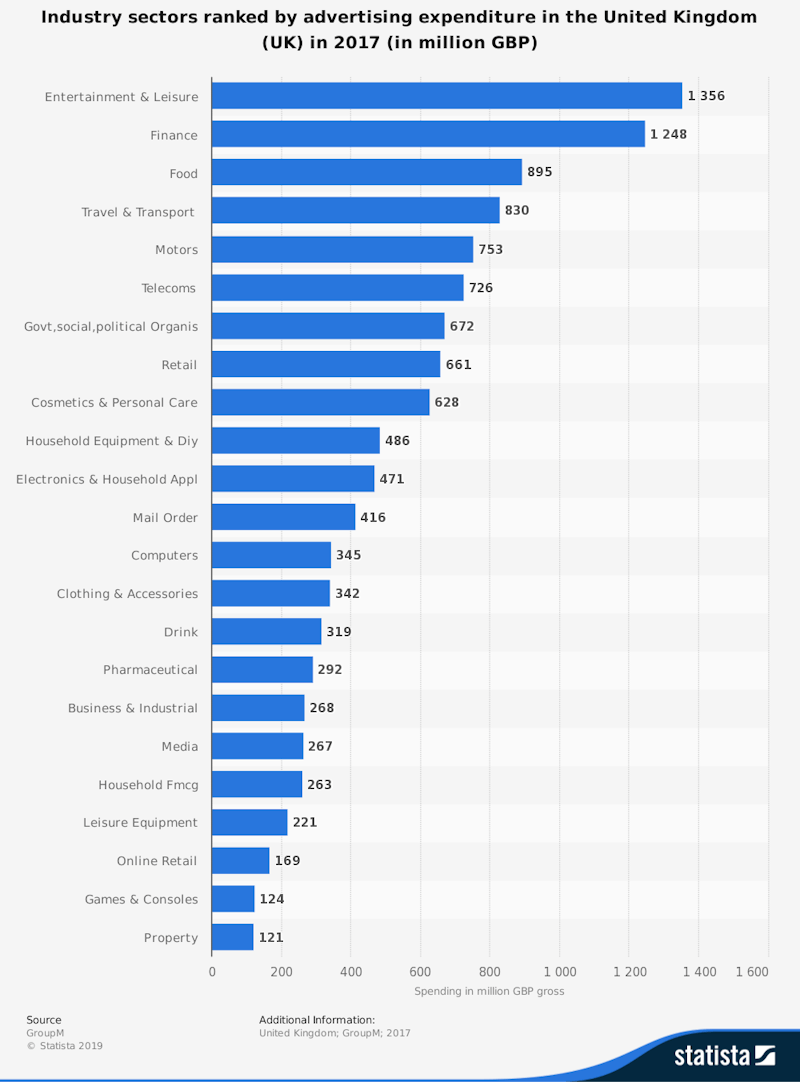Study Notes
Advertising in Oligopoly
- Level:
- AS, A-Level, IB
- Board:
- AQA, Edexcel, OCR, IB, Eduqas, WJEC
Last updated 3 Feb 2019
Why is a high level of advertising spending including traditional and digital media often a prominent feature of business strategy in an oligopolistic market?
An oligopoly is a market with a high level of market concentration with the leading firms dominating market share. Often in an oligopoly, there may be lengthy periods of "price stickiness" which happens when firms are setting similar prices and may have little incentive to change them even when there is a change in the costs of supply.
Price rigidity may also occur when there is a well-established firm who has price-leadership influence or when firms are tacitly agreeing not to compete with each other on price. Game theory suggests that this form of tacit collusion can be a regular feature of competition between firms in an oligopoly.
In this situation, businesses may turn instead to using different types of non-price competition such as heavy spending on marketing and branding. Both traditional and digital media can be used ranging from TV and radio advertising to clever use of social media campaigns designed to reinforce brand awareness and achieve viral spreading of brand messages.
The Advertising Association estimates that across all forms of marketing media, there was £23.5 billion of total UK advertising spending in 2018.
The chart below shows industry sectors ranked by advertising expenditure in the United Kingdom in 2017. For example more than £1.3billion was spent by firms in the entertainment and leisure sector.

The next data chart provides support for the argument that high levels of advertising spending is associated with oligopoly. Notice how the leading firms such as Proctor and Gamble, BT and Sky are all in highly concentrated markets such as telecoms, cosmetics and pharmaceuticals.
There is an intense battle both to improve and then maintain market share and to use advertising as a strategy to make it harder for new products to enter a market, gain traction, sales and become commercially viable.

Digital advertising spending in the UK is soaring. Digital advertising expenditures increased by over £6 billion over the nine-year-period between 2007 and 2016 with further rapid growth expected.
A huge number of people now get their news direct from social media which has contributed to declining readership and sale of daily newspapers. Google and Facebook between them dominate the digital advertising market. More on this shift in the new media industry can be found here.

You might also like

Neuroscience, game theory, monkeys
30th July 2015

Possible Regulatory Capture? OFGEM and Keeping Secrets
28th January 2016

Game Theory and Cameron's EU Deal
26th February 2016

EU Blocks Takeover of O2 by Hutchinson
12th May 2016
Is Morrisons positioning itself as a deep discounter?
6th September 2016

British Gas hikes electricity prices by 12.5%
2nd August 2017

Economies of Ale - Changes to the UK Pub Industry
27th November 2018
Asda-Sainsbury Merger under threat from the CMA
Study Notes